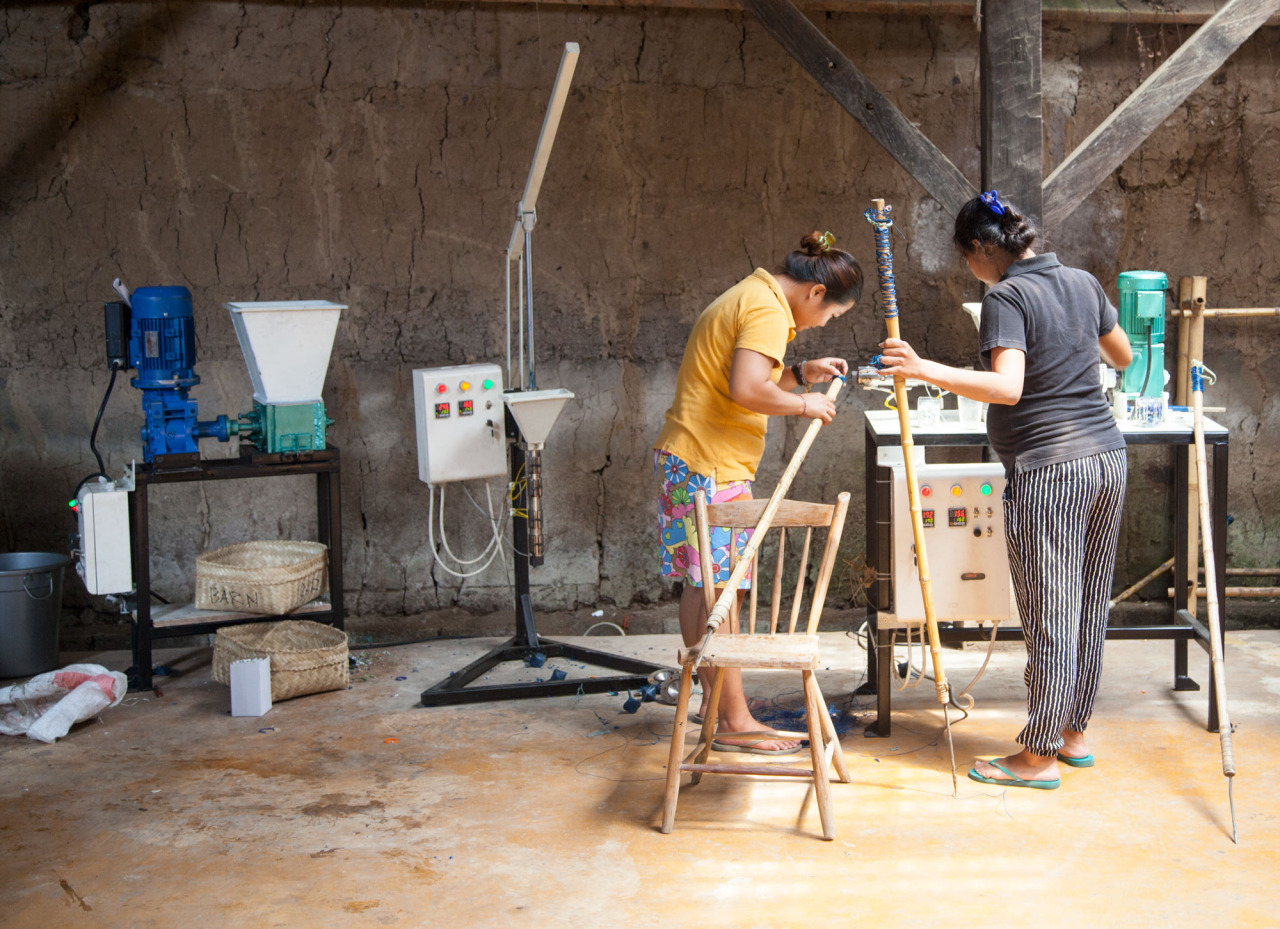Dave Hakkens, a Dutch designer who launched Precious Plastic, a global network that invites hundreds of people from all over the world to work on solving issues related to plastic waste, is due to speak Oct. 10 at the Grand Hyatt Seoul as part of the Herald Design Forum 2019
Hakkens’ goal is quite simple: Make things more sustainable.
“The projects I have done have been often related to reducing waste or changing the way we do things so they are more efficient and better for the environment,” Hakkens said in a recent email interview with The Korea Herald.
“Phoneblocs,” one of his early projects, is a modular phone that lets users replace key components when necessary, as well as customize it to suit their needs.
 |
People in Indonesia working with open-source machines available from Precious Plastic, which used to recycle plastic and produce products at different needs. |
“The project started when seeing how much waste was being produced with electronic devices. I saw that phones were contributing a huge portion to this waste, as they are so easily and frequently replaced as they get slow or broken,” Hakkens said.
For Hakkens, plastic isn’t something that we have to get rid of once in for all. It is more about how we use the material, which lasts a very long time and is difficult to break down.
“I am still unsure if plastic is good or bad, but I believe that we don’t use the material properly. It’s a resource that lasts an extremely long time and we use it for the most cheap and disposable things. I believe that it is the wrong way to use plastic,” Hakkens said.
His most popular project “Precious Plastic,” launched in 2013, is also a scheme aimed at tackling plastic pollution. The online project shares knowledge, tools, techniques and instructions that allow people to build things by recycling the material. Precious Plastic, now in its third edition, has developed into a community of hundreds of people working together on dozens of projects, remotely or on sites.
The more participants, the more effective the projects can be, the designer said. If more people become more aware of the issues related to plastic pollution and become involved with such initiatives, it will obviously have a bigger impact.
Recalling “Phoneblocs,” Hakkens said, “It is very difficult to make a phone, so the plan was to put the idea online and hope to get support from people. So if a lot of people like the idea, then companies may see that there is a market for this project.”
“The original goal was to get 200 people interested in the project, but it ended up with around 1 million people. I didn’t expect that, but realistically there needed to be this many people involved in order for companies to pay attention. The plan was always more to inspire companies to work in this direction because it would change the way in how we make and design electronics. So it’s not something that you could do in a year, but rather more of a 20-year plan,” Hakkens added.
For now, Hekkens is hoping to make Precious Plastic more global.
“Right now, a lot of development is done at Precious Plastic headquarters here in Eindhoven. So the project is quite centralized at the moment,” Hakkens said. “With each version we are trying to do that more and more so that Precious Plastic headquarters is not needed in the development of a project,” Hakkens added.
 |
A view of Precious Plastics's outdoor workspace. (Courtesy of Dave Hakkens) |
Hakkens has to focus on one thing at a time, but there are many things he would like to do.
“I think I always have a thousand things that I wish to do, but I understand that if you do all of them you won’t do them properly. So I do try to keep focus on one main project at a time. At the moment, the focus has been towards Precious Plastic and the release of Version 4, which is coming in October,” Hakkens said.
“After that, there will be more time for other projects. We have one project which is a bit more related to fashion and the waste made there. Another is Project Kamp, where we are trying to determine how to live a more sustainable life, where we will be doing work on how to build houses, grow our own food and source our own energy,” the Dutch designer said.
By Shim Woo-hyun (
ws@heraldcorp.com)





![[Herald Interview] 'Trump will use tariffs as first line of defense for American manufacturing'](http://res.heraldm.com/phpwas/restmb_idxmake.php?idx=644&simg=/content/image/2024/11/26/20241126050017_0.jpg)



